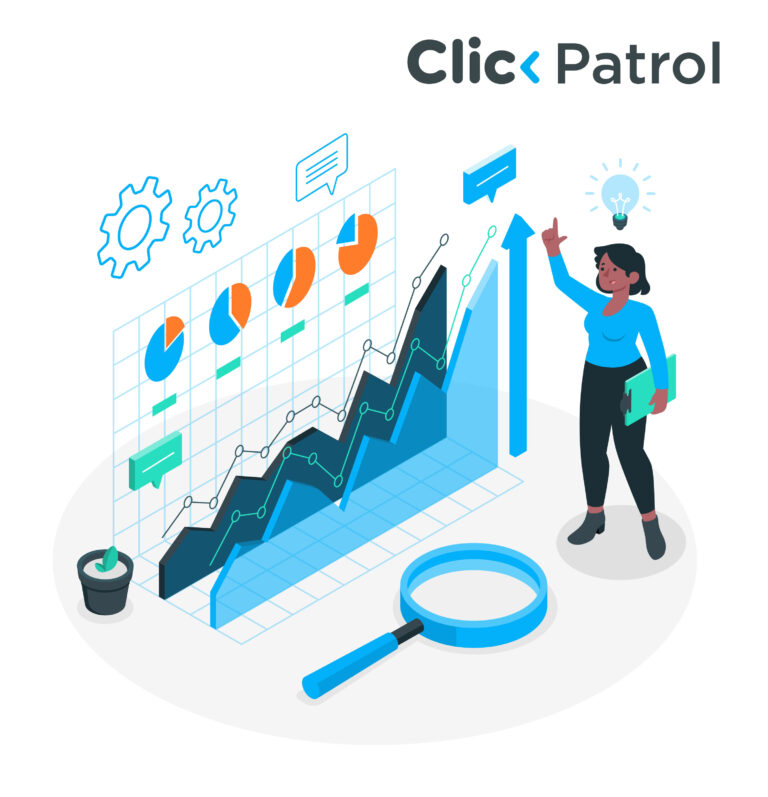
Comprehensive Bot Protection for Google Ads
Abisola Tanzako | Aug 27, 2024

Table of Contents
Every advertiser needs bot protection for Google Ads
Google ads are indispensable for advertisers and publishers in the digital marketing industry. Utilizing Google Ads has become an efficient method for brands to meet their target audiences and raise conversions without problems. The growth of automated programs and scripts has placed Google Ads at risk of bot traffic.
Among advertisers, it is now a top priority to understand and establish measures to protect their sites from bots so that they can succeed in their campaigns and maximize their ROI. This article will examine how bot traffic affects Google Ads, describe some techniques used to protect against bots and provide the best practices for implementing these techniques effectively.
What are bots?
Bots are software applications that run automated activities on the internet. These activities can be as simple as repetitive actions or as complex as operations. There are two primary categories of these bots: good and bad. Good bots index web pages for search engines, chatbots assist customers, and monitoring bots assess a website’s performance and make it more efficient.
On the other hand, bad bots with malicious intent are employed for invalid activities such as spamming, content scraping, DDoS attacks, and click fraud, resulting in financial damage, compromised data, and damage to an organization’s reputation. Bots can imitate human actions and can carry out tasks effectively and in no time. These tasks include completing forms, clicking on ads, or scraping data from websites.
Digital marketers employ bots or automated software to carry out their social media activities, ad campaigns, and data analytics processes. All the same, bots can also be a big threat to advertisements because they can generate invalid traffic as well as fake ad clicks.
How do bots affect Google Ads?
Google ads can be affected by bots in several ways. Here are some of the ways that bots can affect Google Ads:
1. Click fraud
Bots click on ads to boost click-through rates on Google ads, a practice called invalid click. This wastes ad budgets and causes publishers or advertisers to misallocate resources, as the ad will not generate real leads or conversions.
2. Impression fraud
Bots create fake ad impressions on Google ads for display and video ads. This increases the ad’s reach, affects its viewability, and ruins a company’s efforts to build brand awareness.
3. Conversion rate distortion
Bots are smart; they can copy human actions to increase an ad’s conversion rates. This misleads advertisers in their budget allocation and attempts to optimize their campaigns.
4. Effect on quality score
Bot activity can negatively influence Google’s Quality Score, affecting cost per click and ad positioning. Bots convert, leading to poorer ad quality and relevance, higher costs, and reduced visibility.
5. Messing up retargeting lists
When bots often visit a website, they can mess up its retargeting lists. This leads advertisers to waste money on fake potential customers and have less useful audience data to work with for their remarketing campaigns.
Common indicators of bot activity
Spotting bot activity can be a bit tricky, but there are a few things to look out for:
- Suspicious data transfer: When large or frequent data transfers are spotted on a website, It can indicate bot activity, particularly if they happen outside regular business hours.
- Irregular network patterns: When traffic from specific IP addresses or regions spikes, especially regions your ads are not targeting, it can suggest bot activity. Bots often create traffic patterns that differ from typical user behavior.
- Unauthorized access attempts: Many failed login attempts or attempts to access restricted website areas can signal bots trying to break into the site.
- High click-through rates (CTR) without results: An increase in CTR that doesn’t lead to more sales can mean bots are clicking on the ads or links on the website.
- Quick budget drain: When an ad campaign budget runs out faster than usual without more people engaging, it is a sign that bots could be clicking the ads.
- Strange traffic flows: A clear sign of bots messing with Google Ads is abnormal traffic patterns. Bots often create traffic patterns that do not look like real user behavior. They might visit pages in a random order or way too often.
How bots affect Google Ads
1. Financial losses
Bots can seriously affect Google ads by causing financial losses. They attack and ruin advertisers’ campaign budgets by making expensive clicks or views that will not lead to conversions or sales. The wasted budget will cut into the profits from ad campaigns, resulting in a financial loss that could have gone toward getting real customers.
2. Data distortion
Bots ruin sensitive data on a site, such as click rates, sales rates, and how much people interact with the website. This ruined data gives the wrong picture of how ads are doing. It makes it hard for advertisers to make smart choices about plans and budgets.
3. Account health risks
When there are too many bots on a site, Google’s fake traffic alarm can be triggered and might cause ads to get rejected, accounts to be put on hold, or even to be banned forever from Google. These actions can mess up an advertiser’s marketing efforts, ruin their relationship with Google, and affect their ability to advertise for a long time.
4. Competitive disadvantage
Competitors are mostly responsible for bot traffic; they often use bots to waste a rival’s budget. This can make the affected advertiser’s ads appear fake to potential customers. As a result, it creates an uneven playing field and can lead to missed chances to succeed in new business.
5. Resource drain
Preventing bot traffic can take time and money. Advertisers must buy monitoring tools, regularly check, and set up protective measures. This pulls focus and resources away from the main business tasks and planning for the future.
Bot protection for Google Ads
Google has advanced systems to spot fake activities, but publishers need extra protection from third-party protection software such as ClickPatrol to check their traffic and shield their ads from bots. Here are some ways to protect Google ads from bots:
- IP exclusions: Identify and block bot networks or suspicious IP addresses from viewing or clicking your ads. Keep this list up-to-date by analyzing traffic and tracking known bot sources.
- Geotargeting and dayparting: Limit ad serving to places and times when your real users will likely be online. This can help reduce exposure to bot traffic that often comes from unexpected places or runs at odd hours.
- Frequency capping: Limit how often your ads appear to the same user. Bots create many impressions or clicks, so capping frequency can lower their effect on the site.
- Click fraud protection tools: Use third-party protection click fraud tools that are made to spot and stop click fraud. These tools often use machine learning to find suspicious patterns and can block bot traffic.
- Negative keyword lists: Put in place complete negative keyword lists to stop your adverts from showing up for bot-related searches or on websites with lots of bot traffic.
- Smart bidding strategies: Use Google’s bidding strategies based on machine learning. They are designed to get accurate conversions and can help reduce the impact of bot traffic.
- Regular account audits: Check and audit your web account often. Watch for sudden traffic increases, high click-through rates, or other odd patterns that might indicate bot activity.
- Google Ads’ built-in tools: Use Google’s invalid click report and turn on auto-tagging. These features can help spot bot activity and provide more accurate tracking data.
Google Ads protection is ongoing
Google ads Protection against bots is an ongoing process that needs constant attention because bot strategies will keep changing as digital ads keep changing. It is crucial to run a good Google Ads campaign; when companies understand and know about the different bot types, how they affect ads, and ways to stop the risks, they can better shield their ad budget and make sure their ads reach real people who might make genuine engagement.
By mixing Google’s built-in protections with active plans and, if needed, tools from other companies, advertisers can cut down on how bot traffic affects their Google ads campaigns. Protecting bots does not just save a company’s ad budget but also keeps ad campaign data accurate and useful, leading to better ad performance overall.
FAQs
Q.1 How do I know if my Google Ads campaign impacts bot traffic?
Bot traffic shows signs like a sudden increase in traffic or clicks, visitors leaving, and a few people engaging or signing up.
Q.2 Can Google Ad’s built-in bot filtering system get rid of bot traffic?
Google Ad’s built-in bot filtering system can spot and block some bot traffic, but it might miss some smart bot attacks.
Q.4 Can I use multiple bot protection solutions simultaneously?
Yes, having more than one bot protection system in place can give you extra layers of security. However, it is important to exercise caution when choosing a protection solution; sometimes, their systems might not play well together or do the same thing.





